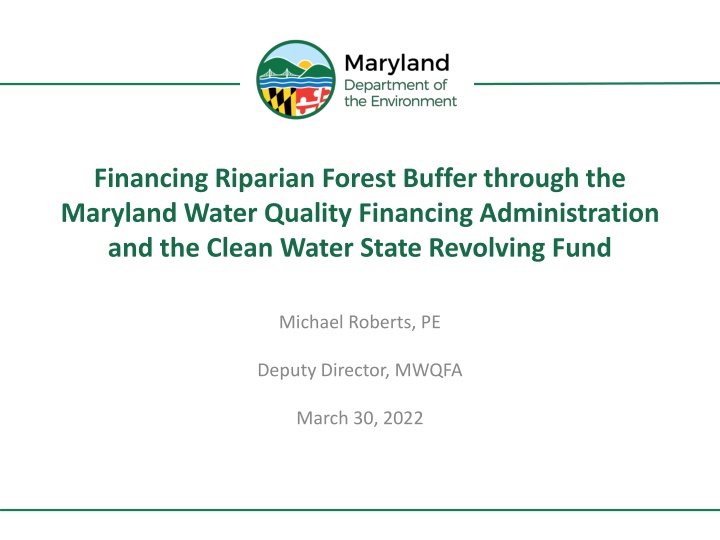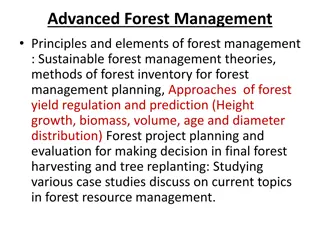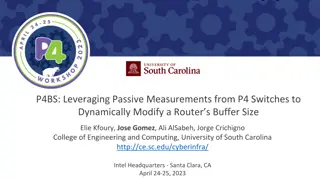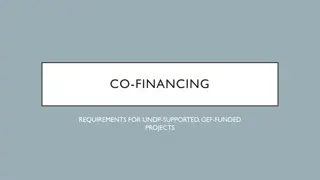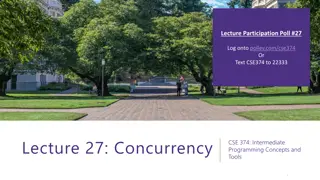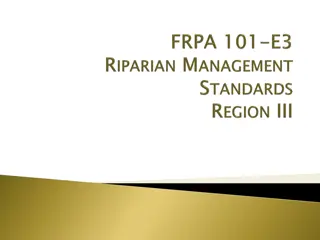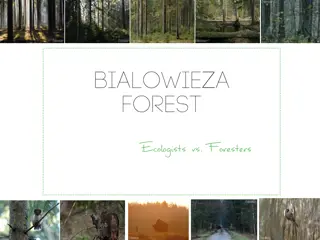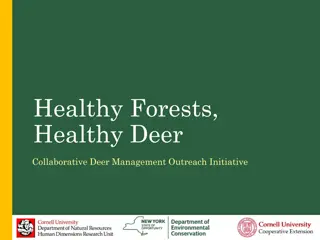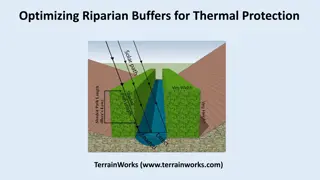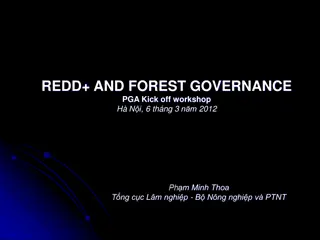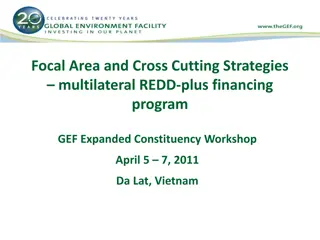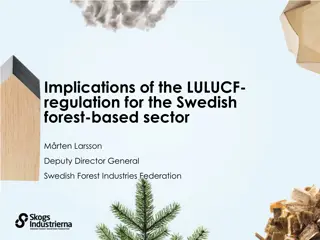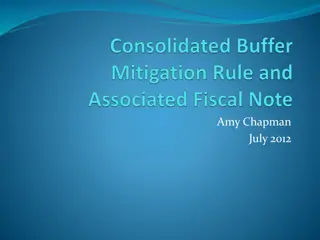Financing Riparian Forest Buffer in Maryland
Financing mechanisms available through Maryland Water Quality Financing Administration and Clean Water State Revolving Fund for riparian forest buffer projects. Learn about CWSRF forestry financing capacity, forestry benefit accounting systems, source water protection, Potomac River Watershed initiatives, and Monocacy River Watershed funding opportunities.
Download Presentation

Please find below an Image/Link to download the presentation.
The content on the website is provided AS IS for your information and personal use only. It may not be sold, licensed, or shared on other websites without obtaining consent from the author.If you encounter any issues during the download, it is possible that the publisher has removed the file from their server.
You are allowed to download the files provided on this website for personal or commercial use, subject to the condition that they are used lawfully. All files are the property of their respective owners.
The content on the website is provided AS IS for your information and personal use only. It may not be sold, licensed, or shared on other websites without obtaining consent from the author.
E N D
Presentation Transcript
Financing Riparian Forest Buffer through the Maryland Water Quality Financing Administration and the Clean Water State Revolving Fund Michael Roberts, PE Deputy Director, MWQFA March 30, 2022
CWSRF Forestry Financing Capacity Clean Water State Revolving Funds are capitalized by annual EPA capitalization grants obtained from federal discretionary funds, from SRF loan repayments, and from SRF program income. WIFIA is a complimentary federal loan program that provides credit subsidy and access to Treasury rates. Significant cost savings are possible for borrowers through the SRF/WIFIA versus the private market. Every Chesapeake Bay state has a financing authority for water quality projects and can apply to WIFIA. The CWSRF is managed in Pennsylvania by PennVest, in Delaware by the Department of Natural Resources and Environmental Control (DNREC), in Virginia by the Virginia Department of Environmental Quality (VDEQ), and in West Virginia by the Department of Environmental Protection (WVDEP).
Forestry Benefit Accounting Systems Establish state standards and metrics for forest ecosystem restoration and protection that fully quantify water quality benefits from practices and provide certainty facilitating private investment. This can serve as a national model for use of the CWSRF in financing forest ecosystem restoration.
Source Water Protection Develop a holistic business case for integrating forest ecosystem restoration and protection and watershed best management practices into drinking water utility plans and programs for source water protection. Develop watershed financing partnerships including regional entities. Align federal, regional, state, and local technical, management, and financial capacity to fund cost-effective BMP s across Chesapeake Bay watersheds. This financing strategy would protect both drinking water quality and health of the Chesapeake.
Potomac River Watershed Landscape-scale BMP implementation in the Potomac watershed would be competitive in MWQFA s Water Quality Integrated Project Priority System are would optimize drinking water quality for Washington, DC. Potential for small surcharge on water bills of the 6.2M people that live in DC to repay a large loan to perform restoration of the Potomac watershed.
Monocacy River Watershed Fund landscape-scale conservation projects through CWSRF loans and guarantee authority. Provide for the funding of the full range of CWSRF eligibilities. DWSRF is also an available funding mechanism.
Forestry Land Trust Alliance accreditation is required for all land trusts receiving MWQFA assistance. More than 30 accredited land trusts operating in Maryland that could provide technical services such as outreach, transaction development, and easement monitoring to watershed financing partnerships. Any land trust can partner with an accredited land trust or be referred to LTA to initiate accreditation.
Proximate Principle - Olmsted Frederick Law Olmsted was inspired by the community gathering spaces that he saw in England and set out to establish public parks for passive recreation in America.As he developed Central Park, he recorded surrounding property values and developed the Proximate Principle. Every property that was adjacent to public passive green space was expected to have a marginal increase of 20% in value.1 The incremental increase in tax revenues from increased appraisals could be used to repay a CWSRF loan. 1Olmsted, Frederick Law. Civilizing American Cities: Writings on City Landscapes. De Capo Press, New York, New York. 1997.
